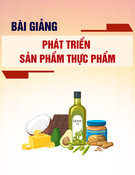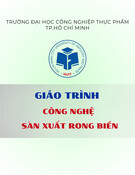
Int.J.Curr.Microbiol.App.Sci (2020) 9(11): 255-260
255
Original Research Article https://doi.org/10.20546/ijcmas.2020.911.030
Impact of Mother Nutritional Knowledge on their
Child Nutritional Health Status
Seema Kumara1*, Ruby Kumari1 and Usha Singh2
1Department of Home Science Food and Nutrition College of Community Science,
DRPCAU, Pusa Samastipur Bihar, India
2Department of Food and Nutrition, College of Community Science, Dr. Rajendra Prasad
Central Agricultural University Pusa Bihar, India
*Corresponding author
A B S T R A C T
Introduction
A mother who has the knowledge of nutrition
is well versed with nutritional demands
during pregnancy or during lactation,
supplementary foods, immunization, growth
monitoring, formation of healthy food habits,
personal cleanliness like brushing teeth,
International Journal of Current Microbiology and Applied Sciences
ISSN: 2319-7706 Volume 9 Number 11 (2020)
Journal homepage: http://www.ijcmas.com
A Mother is the prime provider of the primary care to her children during the early years
and this care was mostly influenced by her knowledge and understanding of basic nutrition
and child health. It was apparent that her education plays an important role in her
upbringing of child. The educated mothers tend to avoid having their first child at
undesirable early age which slow down risk of Infant Mortality Rate. Literate mothers play
assertively a greater part in intra family a decision affecting the child’s needs and also
provide early and effective use of health services to their children. Thus, mother’s
education and child development were highly associated. This induces better food habits
by eating quality food which was nutritious and conductive a good health. The healthy
dietary pattern established in childhood keeps various diseases away and this habit builds
up throughout till adolescence and adulthood. Thus healthy childhood promises healthy
adulthood. Literate mothers play important role for child development and wellbeing. The
finding of the study showed that knowledge of mother regarding vitamins (63.33%),
minerals knowledge (75%), importance of mother milk (78.33%) and (65%) mothers
knowledge about nutritional deficiency diseases and (78.34%) have medium knowledge
regarding general health. socio-economic variables had effect on the nutritional knowledge
of mother, only education and occupation are highly significant at 1per cent level of
significance. 35 per cent cases of malnutrition among children with the maximum per cent
(23.33%) under Grade 1 malnutrition, followed by 10 per cent in Grade 2 malnutrition and
1.67 per cent in Grade 3 malnutrition percentage of children under Grade 1 malnutrition
was more (23.33%) in male subject as compared to female subject (20.0 %). correlation
relation of nutritional status of children with nutrition knowledge of mother (r =0.316*)
was positive and significant at 5 per cent with education level of mother was (0.266*)
positively.
K e y w o r d s
Mother Nutritional
Knowledge,
Child Nutritional,
Health Status
Accepted:
04 October 2020
Available Online:
10 November 2020
Article Info

Int.J.Curr.Microbiol.App.Sci (2020) 9(11): 255-260
256
washing hands, daily bathing etc. as dirt is
responsible for spreading infectious diseases.
She can inculcate the importance of good
hygiene in children. Educational level and
influence of home maker's knowledge not
only influence the food choices and meal
patterns but also methods of cooking so that
corrective steps for conserving nutritive value
of foods may be taken. The above facts
indicate that many nutritional and health
problems of children can be decreased if the
mothers of the children are well trained and
educated. The ignorance and lack of adequate
knowledge and information of mothers can be
attributed as one of several causes for
prevalence of malnutrition among children.
According to National Family Health survey
(NFHS-4 2015-16) in Bihar, women who are
literate in urban area is 70.6 % and in rural
area is 46.3% and at the same time under five
child mortality rate (Per 1000live births) for
urban area is 40/ live births and for rural area
is 60 /live births. Education has been found
positively influencing the child nutritional
status. For example, in Kerala the high
percentage of educated women (UG & PG,
67% and 78%) results in low child mortality
rate i.e. 7 (per 1000 live births). But in Bihar,
the low education among mothers (only17 %
graduates) child mortality rate that is 58(per
1000 live births) which is very high in
comparison to Kerala. Hence it can be
presumed that child caring practices and
quality depends on mother’s education which
may indirectly be related to nutritional
knowledge of mothers. The educational level
of mothers and the nutritional knowledge
indirectly may have impact on the nutritional
status of under five years kid. It was earlier
proved that education provides more
knowledge to mother to help their children to
succeed academically. Indirectly maternal
education influenced child’s educational
achievement through its impact on parent’s
belief and values surrounding achievement
and free form disease. The maternal
awareness regarding breast feeding helped in
providing adequate nutritional requirements
of the baby, and to reduce neonatal mortality.
Those mothers who were literate and had
basic knowledge about the significance of
breastfeeding allow their children to have
colostrums as first milk which is yellow
colour fluid. This milk after 3rd to 5th day
after birth just contain the right amount of fat,
sugar, water, protein, to take care of the
proper growth of baby. The mother must
know that the breast milk is yellow liquid
gold and it also contains antibodies which
protect babies from illness. The ear infection
and diarrhea are more common among
formula fed babies. A child needs a balanced
and correct diet to supply the nutrients and
energy needed for the proper growth and
development. Although the children’s food
consumption is highly variable from plate to
meal, their daily energy consumption is
relatively constant. Young children rely on
their parents for nutrition; mothers in
particular can have a potentially strong
influence on children’s nutrition outcomes
because in most families, mothers spend more
time taking care of children than fathers. This
suggests that mothers’ education would likely
matter more than fathers’ education. Hence, it
is reasonable to assume that more educated
mothers should have healthier, better
nourished children. Children are the future of
society and thus constant health status
monitoring is necessary to ensure a healthy
future of the society.
The main objectives of this study include
Impact of mother nutritional knowledge on
their child nutritional health status.
Materials and Methods
The research methodology is one of the
important pillars of the research work. This
study was conducted in Samastipur districts

Int.J.Curr.Microbiol.App.Sci (2020) 9(11): 255-260
257
of Bihar Altogether 82 questions related to
nutrition impacting health were asked through
developed interview schedule. The answer to
questions was quantified by giving one score
to the correct answer and zero score to the
incorrect. The total knowledge score for
individual respondent was calculated by
summing up the number of questions
correctly answered and categorized into three
levels as follows:
Level of knowledge score of the respondent =
100
The score thus obtained were put into the
Mean ±SD procedure to obtain low, medium
and high categories of level of knowledge as
given below.
Knowledge level
Score
Low
Less than (Mean- SD)
Medium
In between (Mean ± SD)
High
More than (Mean +SD)
Results and Discussion
The knowledge of mothers regarding vitamins
has been presented in above table around
63.33 per cent mothers have medium level of
knowledge about vitamin followed by 20 per
cent having low level of knowledge and 16.67
percent mother high level of knowledge
regarding vitamins. Around 75 per cent
mothers have medium level of knowledge
about minerals followed by 15 per cent
having low level of knowledge and 10 percent
mothers having high level of knowledge
regarding minerals. Knowledge of mothers
about importance of mother’s milk showed
that 78.33 per cent mothers have medium
level of knowledge about importance of
mother milk followed by 11.67 per cent
having low level of knowledge and 10 per
cent mothers having high level of knowledge
regarding importance of mother milk. 65 per
cent mothers have medium level of
knowledge about nutritional deficiency
disease followed by 18.33 per cent having
low level of knowledge, and 16.67 per cent of
mothers having high level of knowledge
regarding nutritional deficiency disease and
78.34 per cent mothers have medium level of
knowledge about general health followed by
13.33 per cent who had high level of
knowledge whereas 8.33 per cent mothers had
low level of knowledge regarding general
health.
Table 2 showed that all the socio-economic
variables had effect on the nutritional
knowledge of mother. In all the variables,
only education and occupation are highly
significant at 1per cent level of significance.
Nutritional status indicator of preschool
children
After recording the data on anthropometric
indices (weight, height and MUAC) of
preschool children, a detailed calculation has
been made to elicit information on state of
malnutrition among preschool children which
has been presented through Table and
illustrated in figure.
When, the state of malnutrition was observed
as per Gomez classification on the basis of
per weight for age, the percentage of normal
children was only 65. There were 35 per cent
cases of malnutrition among children with the
maximum per cent (23.33%) under Grade 1
malnutrition, followed by 10 per cent in
Grade 2 malnutrition and 1.67 per cent in
Grade 3 malnutrition.
The comparative study of the state of
malnutrition as per Gomez classification has
been presented in Table 4.The percentage of
normal children was 60 in case of female
subject as compared to male subject. But, the

Int.J.Curr.Microbiol.App.Sci (2020) 9(11): 255-260
258
percentage of children under Grade 1
malnutrition was more (23.33%) in male
subject as compared to female subject (20.0
%). There was no case of Grade 3 (severe
malnutrition) among male subject. The
percentage of female subject under Grade 3
malnutrition was 6.67. In case of Grade 2
malnutrition also, the percentage was more
(13.33 %) in female subjects than that of male
subject (3.33 %).
Table.1 Knowledge of mother on health and nutrition in different fields
Knowledge level about vitamins
Respondents (n=60)
Frequency
Percentage (%)
Low (up to 17.91)
12
20
Medium (17.91 to 70.27)
38
63.33
High (above 70.27)
10
16.67
Total
60
100
Knowledge level about minerals
Low (up to 40.04)
9
15
Medium (40.04 to 71.96)
45
75
High (above 71.96)
6
10
Total
60
100
Knowledge level about importance of mother milk
Low (up to 47.98)
7
11.67
Medium (47.98to 75.5)
47
78.33
High (above 75.5)
6
10
Total
60
100
knowledge level about nutritional deficiency disease
Low (up to 42.47)
11
18.33
Medium (42.47 to 79.19)
39
65
High (above 79.19)
10
16.67
Total
60
100
knowledge level about general health
Low (up to 52.16)
5
8.33
Medium (52.16 to 75.34)
47
78.34
High (above 75.34)
8
13.33
Total
60
100
Table.2 Regression coefficient of socio economic profile with nutritional knowledge of mother
Constants
Regression
coefficient
Standard Error
Significance
Age
-0.003
0.005
0.564
R2=0.542
Education
0.081
0.019
0. 000**
Occupation
0.049
0.013
0. 000**
Type of family
0.023
0.077
0.763
Size of family
0.002
0.053
0.969
Religion
0.101
0.065
0.128
Family _income
-0.018
0.016
0.268
Food habit
-0.120
0.069
0.089
* Significant at 5 % level of probability, **Significant at 1 % level of probability

Int.J.Curr.Microbiol.App.Sci (2020) 9(11): 255-260
259
Table.3 State of malnutrition among preschool children (as per Gomez classification)
Classification weight
for age
Weight by age % of expected
Frequency
Percentage
(N=60)
Grade 3rdmalnutrition
60
1
1.67
Grade 2nd malnutrition
61-75
6
10
Grade 1st malnutrition
76-90
14
23.33
Normal
>90
39
65
Table.4 A comparative study of state of malnutrition among male and female (as per Gomez
classification)
Classification weight
for age
Weight by
age %of
expected
Male (N=30)
Female (N=30)
Frequency
Percentage
Frequency
Percentage
Grade 3rd malnutrition
60
0
0
2
6.67
Grade 2ndmalnutrition
61-75
1
3.33
4
13.33
Grade 1stmalnutrition
76-90
7
23.33
6
20
Normal
>90
22
73.34
18
60
Table.5 Correlation relation of nutritional status of preschool children with different parameters
Nutritional status of preschool children
Nutritional knowledge of mother
0.3165*
Education level of mother
0.266*
Socio economic
Age
-0.257*
Qualification
0.660**
Occupation
0.0235
Family type
-0.0254
Family size
0.0248
Religion
-0.2046
Family income
Food habits
-0.0197
-0.15640
* Significant at 5 % level of probability. **Significant at 1 % level of probability
Table5 revealed that the correlation relation
of nutritional status of children with nutrition
knowledge of mother (r =0.316*) was positive
and significant at 5 per cent with education
level of mother was (0.266*) positively,
Emina et al., (2009) observed that children
whose mothers are educated tend to live in
more hygienic environments and are more
likely to be vaccinated and have better
nutritional outcomes. Nutritional status of
child with age (r= -0.257*) negative and
qualification (r=0.660**) positive significant
at 5and1 per cent respectively.
Rajaram et al., (2003) assessed the nutritional
status of preschool children in Kerala and

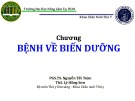

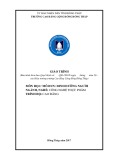

![Đề cương ôn thi Phụ gia thực phẩm [năm hiện tại]](https://cdn.tailieu.vn/images/document/thumbnail/2025/20251120/kimphuong1001/135x160/63671763608893.jpg)



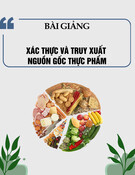
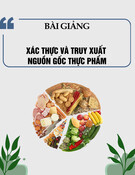



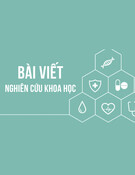
![Đề cương ôn thi giữa kì môn Đánh giá cảm quan trong kiểm soát chất lượng [năm]](https://cdn.tailieu.vn/images/document/thumbnail/2025/20251003/maihonghieu2004@gmail.com/135x160/69751759740815.jpg)

